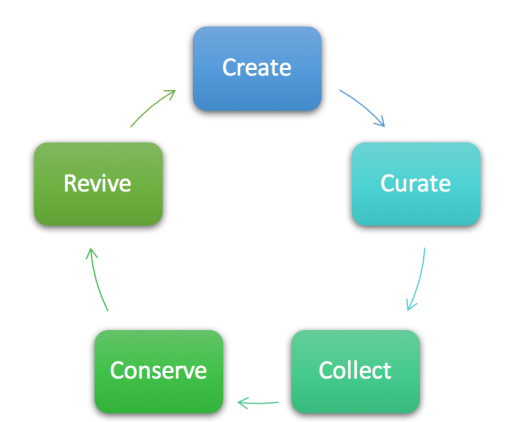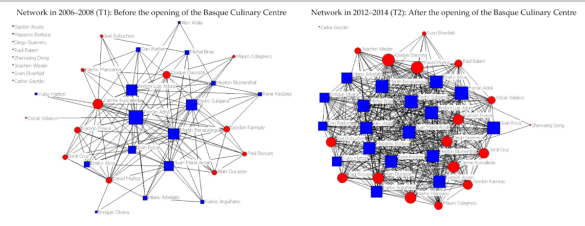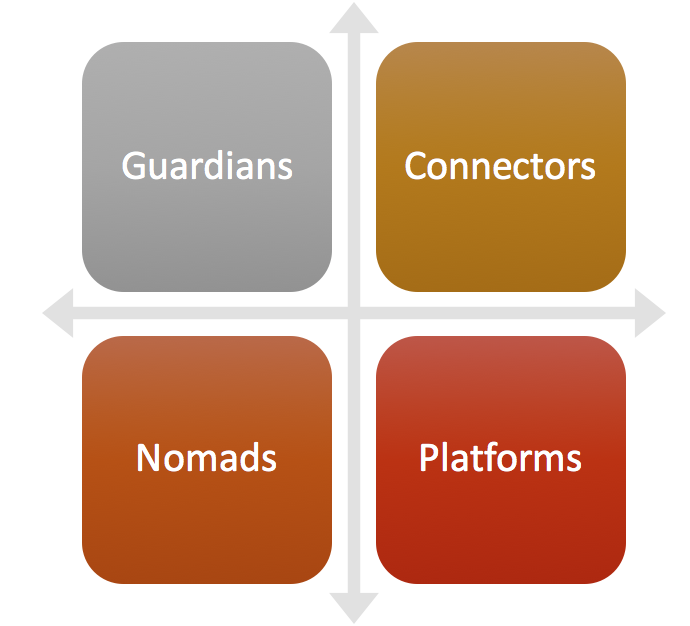CULTURAL VALUE & CULTURAL ECOLOGY
John Dovey – Cultural Value
John Holden (2015) The Ecology of Culture, Swindon: Arts and Humanities Research Council
Henry Jenkins (2013) ‘What Constitutes Meaningful Participation?’, in Spreadable Media: Creating Value and Media in a Networked Culture, pp. 153-195
Henry Jenkins –
Question 1: Why are Van Dijk & Nieborg critique of claims for active media and participation and what are the author’s responses?
- Participatory culture is far more complex than recognised, let’s not discount activities that may be perceived as active, there is value in people consuming media passivity…
Question 2: What is meant by the pyramid of participation?
- “…Shows how the population of users narrows as you reach activities that demand more time, money, resources, skills and passion.” (62)
- This SPACE gives a space /scaffolding to learn and participate
- Bottom –up development of media production
- Dependent on having access to a computer and internet connection
- Most of the members of the community are lurkers with only the elite few exhibiting significant, skill, knowledge etc.
- Observing members that learn from active/participatory and skilled members
- Non-active members, “People learn initially through lurking… or observing from the margins, that certain basic activities may represents a stepping stone toward greater engagement….” (63)
Question 2: What us a ‘Lurker’ and what role do they play?
- Such models frequently depict media production ranging from its highest/most active forms to is more inactive participants (Seeing audience members in fixed hierarchical positions when this is not the case)
Question 2: What historical developments characterise participatory culture?
- Amateur Press Association in the mid 19th century à Young people hand, set type and print own publications about culture, politics and daily life and ail through elaborate circuits which resemble social networks
- Alternative Political movements à African American Community’s creations of its own press in reaction to mainstream news coverage on issues it cared about or its own movies in response to the 1915 release of The Birth of a Nation…
- Minority groups à Consumer activism (Cohen, 2003)
- Personal Radio, (once was privately owned then became state owned…) [Media Ownership]
Question 3: How is resistance seen to differ from participation? & What ARE publics? How does this differ from notions of audiences?[65-67]
- Actively trying to go against top-down mainstream media, come from critical and cultural studies perspective, apparent that people need to form media that oppose dominant forms of media/ hierarchy
- Represents a group of people being part of the same communities (networked communities)
- Talked about branding and communities, sharing identity, sense of criticism that If your part of a branded community (rather than being active)
- Branding and fan communities can be active by challenging corporations, through networking, we can challenge
Publics…
Audience is an aggregate of collected individuals, a public could be fandoms, what happens why? Acting a community rather than as individuals, mobilisation etc.
Group that is sharing messages,
Question 4: What does collaboration involve? What is its significance? Why is a move from hearing to listening important?
Collaboration…
- Difference co-creation, more of an agreement, collaboration, maybe not so much collaboration involves complex relationship that act’s in the interest to benefit collaborators
- Fan made films? Functions as an agent of entertainment within culture, brand, boosting/marketing their popularity
- Appropriation of a media product à marketing
- Notion of collaboration Johnson, influencing culture and audience engagement à amplify, possibly exploitative
- Hearing rather than listening?
- Communication and aggregation of user data, rather than collect data we can act on it, responding in a meaningful way, to audience and directly addressing to user groups/communities
- That can increase the bottom-line for companies
Question 5: What is successful co-creation? What does it involve? Why is it important?
Co-creation…
- Talking about as consumers we aren’t passive but active, recreate production, a value network, we are active multipliers, merging production and usage, people creating experiences for themselves (solja boy) unique and innovative takes on that à reproduce
- Blurring of boundaries between the two?
Question 6: Why/How is participation unequal? What strategies/approaches are suggested that respond to unequal participation?
Unequal participation…
- 4 main areas, income –More participation
- Reflects wider social economic ranges
- Institutional
- Reflect demographic of people/participants themselves more time—more production
- Not just a question of access alone but reflects wider cultural capitals
- Smaller communities act on larger scale
- Transmedia immobilisation activism groups, training members how to use new media’s of spread messages, children teaching oldies to use tech
- Breakdown of language barriers, wider spread of media, context-specific uses of technology that broadens participatory culture and access
- Technological literacies
- 61 – Jenkins, bottom of page, unlike those we believe there
- People just watching or listening to media, however, we argue those who are just reading/listening recognised their potential rather than the world there they are locked out of conversation –e.g. Yr. 1, deliberative conversation, value network.
John Dovey – Cultural Value
- Sites of culture? Where is it made? Why is there a debate?
- Funding? How has digital changed the nature of culture?
- Current political and methodological, these are crucial and week by week issues
- Why does our stiff have value in the world?
- Creative economies, digital sharing, web 2.0 etc.
- Measurement and evaluation?
- Cultural ecologies
Cultural Experiences…
- Public culture happens in various spaces, very different, different sites and different values 9 experience individuals
- Values and funding are very difference
- Cultural innovations are driven by commercial funding/ incentives
- Experimental spaces? Funding? Ownership? Investment?
- public culture? Culture as identity e.g. Theatre, cinema, independent media etc.
- Social networking – ways in which culture is analysed/evaluated
- University, lectures
- Shopping leisure
- Moving through spaces, culturally influence?
- Going out, being in bars, parties etc.
- Sharing experiences with family, sharing dinner?
Intrinsic Value –
- liked for what it is, the object alone exerts a dominant level of value without considering wider purpose of functionality [Eg. Van Gogh paintings/High Culture is just good for youàJohn Maynard Keynes]
Extrinsic/Instrumental Value –
- What can this do for me? What can I do for it? [Affordances? Culture is ideology, creating meaning. Culture is identity, forming communities and an outlet for expression]
Neoliberalism –
- The commodification of everything, especially public goods à What creates value? Ideas of value has greatly changed
Cultural & Urban Regeneration –
- Cultural industries can widely regenerate run-down and post-industrial areas (e.g. Bristol) à A large amount of the create sector (including a diverse range) often contributes substantial amounts of economic value to the SES structures.
- DISADVANTAGE… GENTRIFICATION; Whereby, areas are in high demand and the cost of living increases substantially so that only high-class and wealthy individuals can live there à migration of others, original residents are forces to leave
- Measuring value is largely problematic: it is difficult to measure the effects of qualitative and quantitative data in relation to each other
Methods…
- Attitudinal Surveys – analysis audience estimates of economic value of their experience through their willingness to pay. (qualitative)
- Also include questions related specifically to way in which multiple areas of cultural clause can make an impact
- The survey indicates cultural value in four areas…
- Aesthetics
- Symbolic
- Spiritual
- Social (Bakhashi)
Ecosophy –
- Living within a system of subjectivity whereby…
- The human subject as a system: human subject finds it impossible to understand its impact upon these systems…
- Cultural and society as a system
- The biological and material system
Gregory Bateson…
- Ecosystem = Community + Habitat, Shared space
- Value – The perspective of a life in a pattern of relationships – REALATIONAL Not INTRINSTIC
- What’s your poison may be my rewards
- We all have different value systems, deals and bartering to survive, always depends on where you are in the system
John Holden –
What is a Cultural Ecology?
- Ecology of Culture: “…The Creative Ecology, which he defined as ‘an alliance between the subsidised and commercial arts; the professional and the voluntary arts; and the arts and the creative industries’.” [5/84]
- “Each artform has its own micro-ecologies.” [5/84]
- Cultural ecologies represent highly complex and interconnected habitats in which different cultural practices, industries, art forms and experiences exist and simultaneously influence each other and further and wider impacts upon wider societal implications à Interdependencies are key here!
- Cites Ann Markussen – “‘An arts and cultural ecology encompasses the many networks of arts and cultural creators, producers, presenters, sponsors, participants, and supporting casts embedded in diverse communities.” [6/85]
The Three Spheres of Culture…
Publically funded sector:
- “…where the production or maximisation of public goods is assisted by support directly from the state or from philanthropists (where the state foregoes tax income).” [7/86]
- Includes art forms such as theatre, dance, literature, visual arts, music, museums etc.
- Cites The BBC Symphony Orchestra’s Hughes “… ‘Public money is seed money, it sustains the ecology.” [7/86]
- Publically funded education is a crucial factor in developing and sustaining a cultural ecology
- Homemade Culture:
- “…defined by the fact that people do not get paid for their work, (notwithstanding the grants or sponsorship.)” [8/87]
- Hetrogenous industry that includes ‘Amateur arts’, ‘Voluntary arts’ and internet based co-creation à involves large amounts of people often within collaborative networks
Commercial Culture:
- “…defined by the fact that it exists without direct public investment, and individuals and organisations must make an overall profit to survive.” [9/88] à Link to neoliberalism
- “But the importance of commercial culture stretches well beyond its financial impact. Most people choose to listen to, watch, read and enjoy commercial culture on a daily basis. These practices are an integral part of life, and major factors in how identity is formed and understood.” [9/88]
Mash-ups of funded, commercial and home-made:
- “Many sub-sectors don’t talk to each other, public and private combine in multiple ways.” [10/89]
- Includes a complex intermingling of all different types of cultural ecologies largely represent the appearance and dynamics of cultural ecologies that exist today
Ecological and economic Approaches to culture:
‘Spillover’ –
- “…proposes the activity in an artistic core of funded culture stimulates activity in the creative industries and from there flows outwards into the wider economy.” [11/90]
- Spillover is also potentially linked with calculation of investment.
- Considers the wider implications of the creative sectors and its wider effects on other elements of societal, economical and educational systems.
Disadvantages/Limitations:
- Generally, this is quite a reductionist and deteriminstic approach to understanding the various connections and networks within different cultures.
- “…spillover defines a cultural ‘expressive’ core that is then commercialised through the creative industries.” [11/90]
- “… creativity and expression flourishes throughout the cultural ecology and can be exploited for economic gain anywhere within it.” [11/90]
- “…spillover implies a uni-directional movement of ideas, people or content from one part of culture to another, whereas the interactions are much more various as Albert et al confirm: ‘The relationship between the publically subsidised and commercial theatre is more complex than a simplistic treatment of spillovers would imply.’26. ” [11/90]
- “… the spillover model outs the (phallic) artist creator at the centre, whereas ‘the artist is really at the periphery. Spillover is a romantic and hierarchical conception of value – because it starts with the expressive (romantic) and moves to the economic.” [11/90] >> More liable to be a joint or community effort similar to a social network
Teleological –
- Assumes that all culture is linked with the purpose of financial gain à Neoliberalist attitude
Disadvantages/Limitations –
- Largely a reductionist and deterministic view of culture…
- Culture is comprised of a vast combination of different roles/purposes such as the production of meaning, expression and creation of identity but also contains social dimensions that are sometimes linked to profit.
- “The cultural ecology cannot be understood without taking into account free labour and emotional rewards” [11/90] à link to the production of cultural capital
Flows within the cultural ecology:
Flows move between and influence…
- … Cultural industry workers demonstrate fluidity of the careers of creative graduates: self employment and portfolio careers.
- .. Creates the possibility of innovation that have the potential to influence wider aspects of society by encouraging creativity and new-thinking.
- .. Money seeks one or two things;
- ‘Public Goods’ à “… includes several things: artistic excellence, or social goods such as health or well-functioning communities.
- ‘Economic Gain’ à “Public money flows into funded organisations through grants made by local authorities , cultural funding agencies, central government and the lottery. Money flows back into the Treasury through VAT on cultural goods and services, PAYE, and corporation tax on commercial activity.
- “The private sector supports public goods through sponsorship, and pursues profit – and often artistic excellence” à Investment and grant giving practices [15/94]
- .. Cultural industries and workers act as “… ‘supply-chain links’ between arts and culture and commercial creative industries…” [16/95]
Visual Models of the Cultural Ecology:
Regenerative Cycle…

Local Networks…

Roles Played…

Guardians;
- Look after Cultural assets such as Museums, Libraries, Archives etc.
- Maintains Cultural assets through ‘persistent investment’, also concerned highly with learning and educational values of Culture
- Individuals can also act as Guardians; such as Country House owners, Collectors, members of preservation societies etc.
Connectors;
- “Put people and resources together, and move energy around the ecology. Producers and impresarios have traditionally undertaken this role, gathering together money, artists, technicians, venues, musicians, and whatever else it takes to make a cultural event happen. These connectors have to have an intimate knowledge of the micro-operations of their field and they need strong and eclectic networks.” [30/109]
- Act as connectors and links between audience and content; e.g. Volunteers heritage organizers as well as commercial producers and curators, commissioners, social networks etc.
Platforms;
- Platforms include places in with content is housed or displayed, including… venues, galleries, community halls, streets, clubs websites, social networks etc.
- Exist across multiple funding types ranging from charities, local businesses, voluntary groups and commercial organisations.
- “Venues act as platforms for the work of others either by programming work or being available for hire.” [30/109]
- Guardians and platforms can also act as connectors with various roles not being fixed but rather dynamic.
- “Venues provide physical platforms in their buildings, but public spaces are also important platforms.” [30/109]
Nomads;
- “The cultural ecology has interconnected guardians, connectors and platforms, but all of them exist because of the fourth role, that of the nomads.” [30/109]
- “They are the demand-side of culture, an often neglected but essential part of the ecology – the viewers, listeners, readers and purchasers whose enjoyment of culture drive its production.” [31/110]
- “Nomads are consumers of culture, but the category also includes producers…” [31/109]
Leave a comment